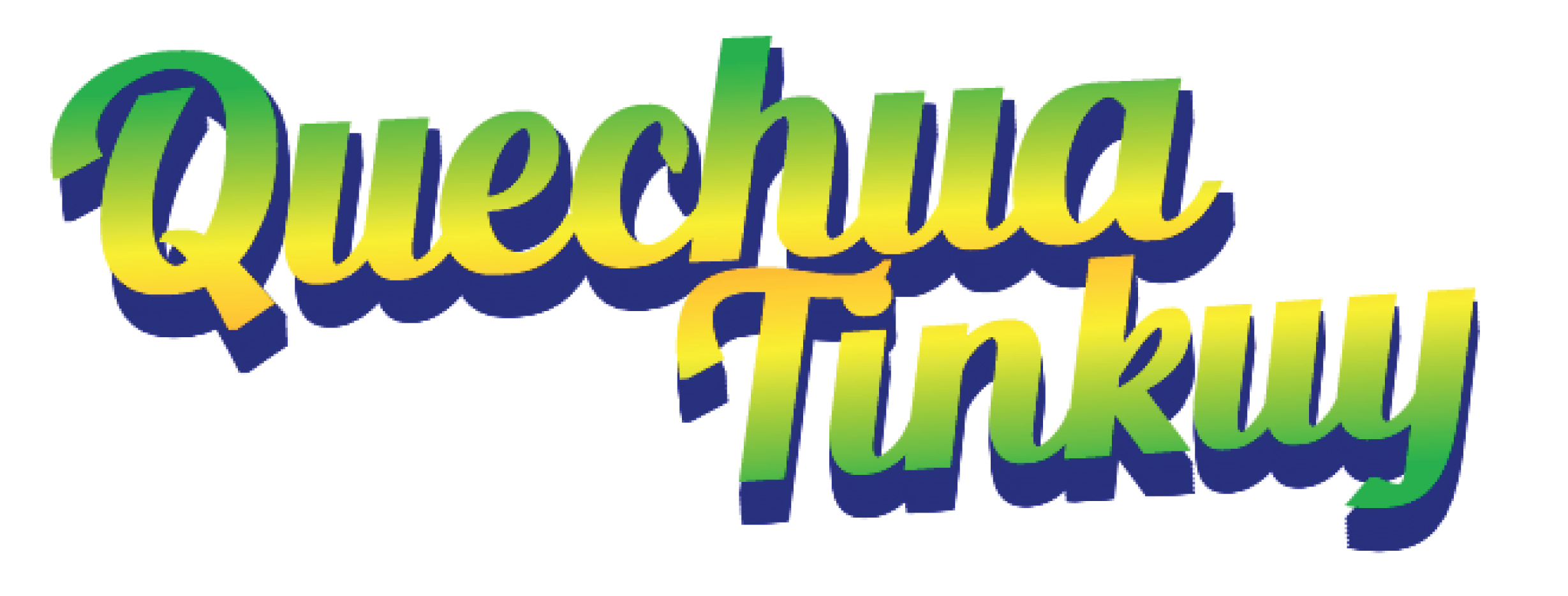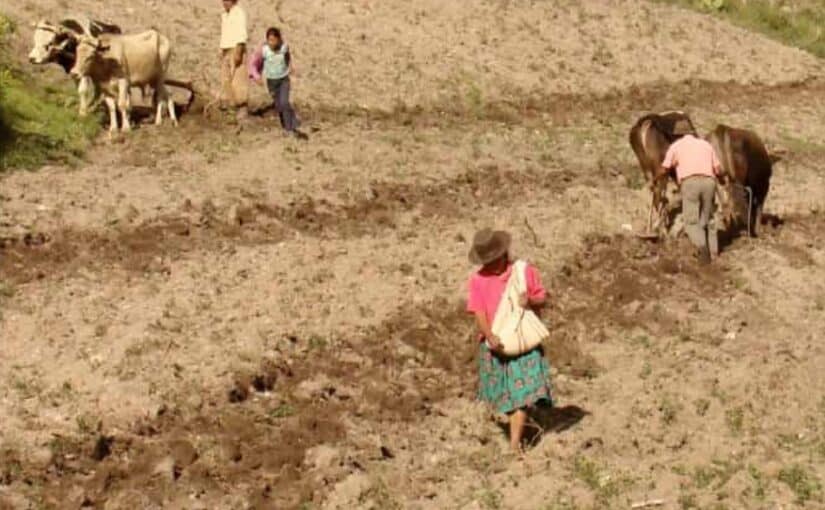
Qallarinapaq | Introduction
In this unit you will put into practice the combination of present tense and activities that are in progress (progressive tense). For this you will use the markers, “shani, shanki, shan, shanchis, shayku, shankichis, shanku”, which will be used depending on the personal pronoun.
For example:
For the pronoun "I":
Ñuqa wayk’u-sha-ni.
I am cooking.
For the pronoun "you":
Qan wayk’u-sha-nki
You are cooking.
Ready? Qallarisun / Let's get started!

Qillqa | Grammar
Remember that each personal pronoun is conjugated in a different way, the following table shows the conjugations with the verb 'to be' in the progressive tense:
Singular – Ch’ulla
| I am | Ñuqa ka-shani |
| You are (singular) | Qan ka-shanki |
| She/He/It | Pay ka-shan |
Plural – Ashka
| We are (inclusive) | Ñuqanchis ka-shanchis |
| We are (exclusive) | Ñuqayku ka-shayku |
| You are | Qankuna ka-shankichis |
| They are | Paykuna ka-shanku |
Now we will look at the present tense conjugation with other verbs:
Verb wayk’uy (to cook):
Singular / Ch’ulla
| Ñuqa wayk’u-sha-ni | I am cooking |
| Qan wayk’u-sha-nki | You are cooking |
| Pay wayk’u-sha-n | She/he is cooking |
Plural / Ashka
| Ñuqanchis wayk’u-sha-nchis | We (I) are cooking |
| Ñuqayku wayk’u-sha-yku | We (E) are cooking |
| Qankuna wayk’u-sha-nkichis | You (pl) are cooking |
| Paykuna wayk’u-sha-nku | They are cooking |
Verb takiy (to sing):
Singular / Ch’ulla
| Ñuqa taki-sha-ni | I am singing |
| Qan taki-sha-nki | You are singing |
| Pay taki-sha-n | She/he is singing |
Plural / Ashka
| Ñuqanchis taki-sha-nchis | We (I) are singing |
| Ñuqayku taki-sha-yku | We (E) are singing |
| Qankuna taki-sha-nkichis | You (pl) are singing |
| Paykuna taki-sha-nku | They are singing |
Verb yachay (to learn):
Singular / Ch’ulla
| Ñuqa yacha-sha-ni | I am learning |
| Qan yacha-sha-nki | You are learning |
| Pay yacha-sha-n | She/he is learning |
Plural / Ashka
| Ñuqanchis yacha-sha-nchis | We (I) are learning |
| Ñuqayku yacha-sha-yku | We (E) are learning |
| Qankuna yacha-sha-nkichis | You (pl) are learning |
| Paykuna yacha-sha-nku | They are learning |

Rimanakuna | Vocabulary
| Ruway | to do |
| Wayk’uy | to cook |
| Tusuy | to dance |
| Takiy | to sing |
| Rimay | to speak |
| Allay | to harvest |
| Paqarinkama | Until tomorrow |

Ruwapakuy | Exercises
Exercises:
Now you try. Fill in the blanks by conjugating the following verbs: tusuy (to dance) and rimay (to speak):
Verb tusuy (to dance)
Singular / Ch’ulla
| Ñuqa tusu-sha-ni | I am dancing |
| Qan _____-sha-nki | You are dancing |
| ____ tusu-____ | She/he is dancing |
Plural / Ashka
| Ñuqanchis tusu-sha-nchis | We (I) are dancing |
| ______ tusu-___-___ | We (E) are dancing |
| Qankuna ___-sha-nkichis | You (pl) are dancing |
| ______ tusu-___-___ | They are dancing |
Verb rimay (to speak)
Singular / Ch’ulla
| ____ rima-___-__ | I am speaking |
| ____ ___-___-___ | You are speaking |
| Pay rima-___-_ | She/he is speaking |
Plural / Ashka
| _____ ____-sha-nchis | We (I) are speaking |
| Ñuqayku rima-___-___ | We (E) are speaking |
| _____ ___-___-_____ | You (pl) are speaking |
| Paykuna ____-sha-nku | They are speaking |
Read the following dialogues and pay attention to the 'shani' and 'shanki' markers, in your notebook create other dialogues using the ' shan, shanchis, shayku, shankichis and shanku' markers.
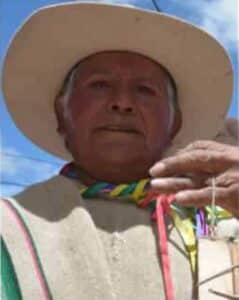
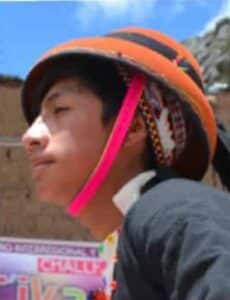
Alberto: ¿Imaynallan wayqey Miguel?
Miguel: Allillanmi Alberto. ¿Qanri?
Alberto: Allillanmi Miguel, ¿Ima-ta-n ruwa-sha-nki?
Miguel: Tarwi-ta wayk’u-sha-ni.
Alberto: Añañau Miguel, ¿upyanapaqri? ¿ima-ta-n ruwa-sha-nki?
Miguel: Quinua aqa-ta-n ruwa-sha-ni wayqey. Hamunki.
Alberto: Hamusaq-mi wayqey. Tupananchis-kama Miguel.
Miguel: Tupananchis-kama Alberto.
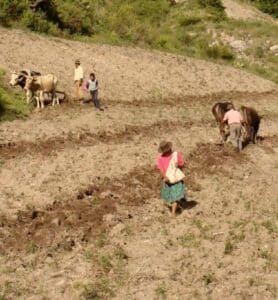
Brígida: ¿Allillanchu turay Francisco?
Francisco: Allillanmi panay Brígida, ¿Qanri?
Brígida: Allillanmi turay.
Francisco: ¿Ima-ta-n ruwa-sha-nki panay?
Brígida: Papa-ta-n alla-sha-ni turay ¿Qanri?
Francisco: Trigu-ta-n alla-sha-ni panay.
Brígida: Kusa turay, paqarin-kama.
Francisco: Paqarin-kama panay.
